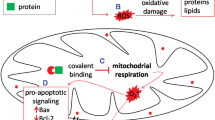Abstract
Dimethylfumarate (DMF), the essential ingredient of the drug product Fumaderm®, is used to treat psoriasis with a recognized favorable long-term safety profile. Interestingly, the mode of action and the pharmacokinetics of DMF in psoriasis or multiple sclerosis are not fully explored. It is known that DMF as an α,β-unsaturated carboxylic acid ester forms an adduct with the antioxidant glutathione in vitro via a Michael-type addition within a very short period of time. In addition, it was shown that this reaction also takes place in vivo since the mercapturic acid of DMF was detected in urine of psoriasis patients after oral intake of Fumaderm®. To verify the hypothesis that DMF reacts with GSH already in or even before entering the portal vein blood an in vivo study in rats was initiated and portal vein blood was analyzed for the presence of DMF, MMF, GS-DMS and break down products, after DMF was given directly into the small intestine. The results show that no free DMF could be detected in the rat portal vein blood at any time point. MMF was the dominant metabolite and GS-DMS was also detectable in portal vein blood. In the rat mucosa the glutathione adducts of DMF and MMF were present. The data obtained provide evidence that the modulation of immune-mediated inflammatory pathways responsible for development of psoriasis and MS are targeted by DMF regulating redox-sensitive pathways for which the reaction with glutathione by DMF plays a crucial role.



Similar content being viewed by others
Abbreviations
- DMF:
-
Dimethylfumarate
- MMF:
-
Monomethylfumarate
- FAE:
-
Fumaric acid esters
- GSH:
-
Glutathione
- GS-DMS:
-
S-(1,2-dimethoxycarbonylethyl)glutathione
- GS-MMS:
-
Mixture of S-(1-carboxy-2-methoxycarbonylethyl)glutathione and S-(2-carboxy-1-methoxycarbonylethyl)glutathione
- N-Gly-DMS:
-
S-(1,2-dimethoxycarbonylethyl)cysteinylglycine
- N-Gly-MMS:
-
Mixture of S-(1-carboxy-2-methoxycarbonylethyl)cysteinylglycine and S-(2-carboxy-1-methoxycarbonylethyl)cysteinylglycine
- N-DMS:
-
S-(1,2-dimethoxycarbonylethyl)cysteine
- N-MMS:
-
Mixture of S-(1-carboxy-2-methoxycarbonylethyl)cysteine and S-(2-carboxy-1-methoxycarbonylethyl)cysteine
- NAC-DMS:
-
N-acetyl-S-(1,2-dimethoxycarbonylethyl)cysteine
- NAC-MMS:
-
Mixture of N-acetyl-S-(1-carboxy-2-methoxycarbonylethyl)cysteine and N-acetyl-S-(2-carboxy-1-methoxycarbonylethyl)cysteine
- KEAP-1:
-
Kelch-like ECH-associated protein 1
- Nrf2:
-
Nuclear-factor (erythroid-derived 2)-related factor-2
- VEGFR2:
-
Vascular endothelial growth factor receptor
References
Fox RJ, Miller DH, Phillips JT, Hutchinson M, Havrdova E, Kita M, Yang M, Raghupathi K, Novas M, Sweetser MT, Viglietta V, Dawson KT, CONFIRM Study Investigators (2012) Placebo-controlled phase 3 study of oral BG-12 or glatiramer in multiple sclerosis. N Engl J Med 367:1087–1097
Frycák P, Zdráhal Z, Ulrichová J, Wiegrebe W, Lemr K (2005) Evidence of covalent interaction of fumaric acid esters with sulfhydryl groups in peptides. J Mass Spectrom 40:1309–1318
Gerdes S, Shakery K, Mrowietz U (2007) Dimethylfumarate inhibits nuclear binding of nuclear factor kappaB but not of nuclear factor of activated T cells and CCAAT/enhancer binding protein beta in activated human T cells. Br J Dermatol 156:838–842
Ghoreschi K, Brück J, Kellerer C, Deng C, Peng H, Rothfuss O et al (2011) Fumarates improve psoriasis and multiple sclerosis by inducing type II dendritic cells. J Exp Med 208:2291–2301
Gold R, Kappos L, Arnold DL, Bar-Or A, Giovannoni G, Selmaj K, Tornatore C, Sweetser MT, Yang M, Sheikh SI, Dawson KT, DEFINE Study Investigators (2012) Placebo-controlled phase 3 study of oral BG-12 for relapsing multiple sclerosis. N Engl J Med 367:1098–1107
Höxtermann S, Nuchel C, Altmeyer P (1998) Fumaric acid esters suppress peripheral CD4- and CD8-positive lymphocytes in psoriasis. Dermatology 196:223–230
Kappos L, Gold R, Miller DH, Macmanus DG, Havrdova E, Limmroth V et al (2008) Efficacy and safety of oral fumarate in patients with relapsing-remitting multiple sclerosis: a multicentre, randomised, double-blind, placebo-controlled phase IIb study. Lancet 372:1463–1472
Litjens NH, Burggraaf J, van Strijen E, van Gulpen C, Mattie H, Schoemaker RC et al (2004) Pharmacokinetics of oral fumarates in healthy subjects. Br J Clin Pharmacol 58:429–432
Mrowietz U, Christophers E, Altmeyer P (1999) Treatment of severe psoriasis with fumaric acid esters: scientific background and guidelines for therapeutic use. The German Fumaric Acid Ester Consensus Conference. Br J Dermatol 141:424–429
Peterson JD, Herzenberg LA, Vasquez K, Waltenbaugh C (1998) Glutathione levels in antigen-presenting cells modulate Th1 versus Th2 response patterns. Proc Natl Acad Sci USA 95:3071–3076
Reich K, Thaci D, Mrowietz U, Kamps A, Neureither M, Luger T (2009) Efficacy and safety of fumaric acid esters in the long-term treatment of psoriasis—a retrospective study (FUTURE). J Dtsch Dermatol Ges 7:603–611
Rostami-Yazdi M, Clement B, Schmidt TJ, Schinor D, Mrowietz U (2009) Detection of metabolites of fumaric acid esters in human urine: implications for their mode of action. J Invest Dermatol 129:231–234
Rostami-Yazdi M, Clement B, Mrowietz U (2010) Pharmacokinetics of anti-psoriatic fumaric acid esters in psoriasis patients. Arch Dermatol Res 302:531–538
Schmidt TJ, Ak M, Mrowietz U (2007) Reactivity of dimethyl fumarate and methylhydrogen fumarate towards glutathione and N-acetyl-l-cysteine-preparation of S-substituted thiosuccinic acid esters. Bioorg Med Chem 15:333–342
Treumer F, Zhu K, Gläser R, Mrowietz U (2003) Dimethylfumarate is a potent inducer of apoptosis in human T cells. J Invest Dermatol 121:1383–1388
Werdenberg D, Joshi R, Wolffram S, Merkle HP, Langguth P (2003) Presystemic metabolism and intestinal absorption of antipsoriatic fumaric acid esters. Biopharm Drug Dispos 24:259–273
Acknowledgments
We would like to thank Lisa Philipp for skilful technical assistance.
Conflict of interest
MRY and UM received educational grants and served as speakers and advisors for Biogen Idec, the manufacturer of the registered drug product Fumaderm®. TSN is an employee of LEO Pharma A/S, Ballerup, Denmark. All other authors declare no conflict of interest.
Author information
Authors and Affiliations
Corresponding author
Rights and permissions
About this article
Cite this article
Dibbert, S., Clement, B., Skak-Nielsen, T. et al. Detection of fumarate–glutathione adducts in the portal vein blood of rats: evidence for rapid dimethylfumarate metabolism. Arch Dermatol Res 305, 447–451 (2013). https://doi.org/10.1007/s00403-013-1332-y
Received:
Revised:
Accepted:
Published:
Issue Date:
DOI: https://doi.org/10.1007/s00403-013-1332-y




